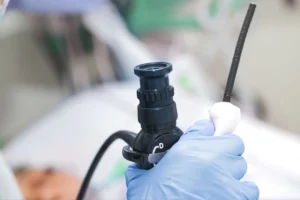Modern healthcare is a data rich environment, particularly in endoscopy units where accurate information and timely communication can make the difference between a successful procedure and a potential patient risk. Seamless integration of an Endoscopy Management System (EMS) can be instrumental in streamlining the exchange of data, ensuring clinical and technical compatibility, and improving the quality of care.
In this article, we’ll explore the importance of effective EMS integration and how it can benefit patients.
Efficient data flow
The seamless integration of an Endoscopy Management System offers important advantages to endoscopy units. Firstly, it ensures a smooth exchange of information between various components, significantly reducing the need for manual data entry at each touchpoint. For example, integration with Electronic Patient Records (EPR) not only saves precious time but also minimises the risk of errors that are commonplace with manual data input. Also, the integration with patient-facing systems for pre-assessment or lab systems for ordering histology tests and receiving results further enhances the overall efficiency of endoscopy units and avoids unwanted delays.
Clinical and technical testing
Successful integration of an EMS is more than just a matter of connecting systems. There must be a willingness from all parties to commit to the project or task. Also the purpose and clinical or administrative benefits must be agreed and widely understood. Data items must be robustly mapped to guarantee effective functionality, while mandatory fields must be matched in sending and receiving systems to avoid critical data omissions. Also, rigorous testing and user sign-offs are crucial to confirm that integration works technically and within the desired workflows. This step helps to identify any potential hiccups early on and ensures the seamless flow of data.
Data consistency
Endoscopy units rely heavily on accurate and consistent data. Seamless integration ensures that updates are synchronised across all systems, eliminating the data consistency errors and discrepancies that occur when information is updated in one system but not in another. As a result, the reliability of endoscopy management processes is greatly improved. Endoscopists and healthcare staff can confidently rely on the accuracy of the data, promoting patient safety and quality of care.
Streamlined communication
Seamless integration of the EMS also promotes enhanced communication within healthcare teams. Medical data can be easily shared across EPR systems, Picture Archiving and Communication Systems (PACS), and endoscopy reporting systems. This sharing of information contributes to better decision-making outside of the endoscopy department, as clinicians have access to a comprehensive view of the patient’s medical history and the results of the endoscopy procedure.
Comprehensive insights
Integrated systems, such as EMS and lab systems, provide a more complete view of patient health which supports endoscopists making more informed decisions regarding patient care. By having access to all relevant data in a single place, endoscopy units can deliver a higher quality of care and potentially improve patient outcomes.
Find out more
For comprehensive details on how MEDILOGIK EMS seamlessly integrates with your existing patient management systems, enabling efficient and streamlined operations, please get in touch to book a free, no-obligation demonstration of our platform.




